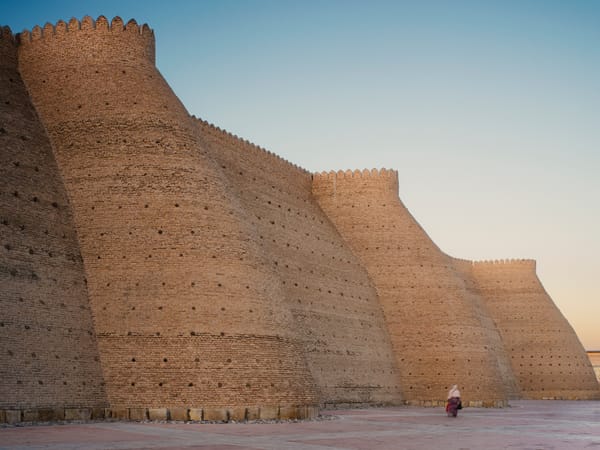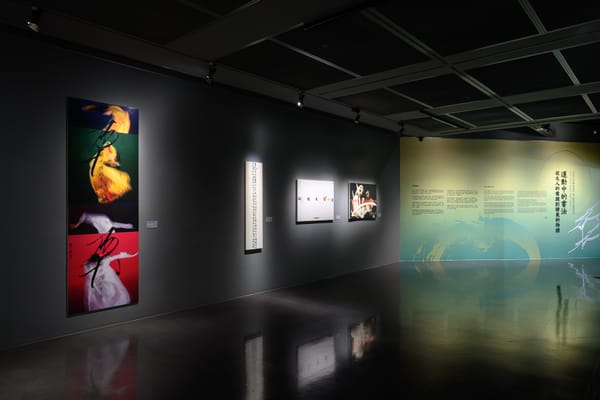Shows
Para Site’s “Two Thousand Eleven”


“Two Thousand Eleven,” at Hong Kong’s independent art space Para/Site, is the first effort by new artistic director Cosmin Costinas, formerly of the Netherlands’ BAK (Basis voor Actuele Kunst). The exhibition, featuring works by Heman Chong, Olga Chernysheva, Federico Herrero and John Smith, took a bleak, somewhat cynical look back at the events of last year—a year in which Arab Spring protests destabilized governments throughout West Asia, Osama bin Laden was killed by US Navy SEALS, the Eurozone nearly collapsed, and major earthquakes in New Zealand and Japan left millions devastated.
Before even entering the gallery, the viewer encounters sky blue rectangles of paint on the curb in front of Para/Site and on the space’s goldenrod-yellow and black facade, painted by Costa Rican artist Federico Herrero. Such patches of paint also appear within the main gallery space, and even up the stairs, to the first floor. Herrero’s intervention was originally planned only for the gallery’s facade, but when he saw the space, he was inspired to paint the interior as well. However, these whimsical blue markings seemed disconnected to the rest of the exhibition—it wasn’t clear what they represented about the year 2011.
Inside, the small gallery has been divided with a diagonal wall, resulting in a jarringly triangular space, which comes to an acute angle at the far corner. Aside from purportedly representing the backslash in “Para/Site,” the triangle’s corner seems to mark an ending; once the viewer reaches its narrow point, there is nowhere else to go and nothing else to see. Costinas has said that it is supposed to represent the end of time—a depressing review of the past year and a prophecy for the one ahead.
Though the other three works featured were created before 2011, they have gained vastly different meanings in the context of the last year’s events. Heman Chong’s Monument to the people we’ve conveniently forgotten (I hate you) (2008), consisting of a million black glossy pseudo-business cards carpeting the gallery’s lower floor, immediately commands the viewer’s attention. While sliding over piles of cards—they are not the easiest surface to walk on—one contemplates their overstated role in the workplace. They represent all the casual acquaintances we have collected and subsequently forgotten—the clause “I hate you” in the title reinforces the silent bitterness of these ignored connections.

Hanging along the broad side of the space, right into the sharp corner, is a series of 25 monochrome photographs by Olga Chernysheva, titled “Alley of Cosmonauts” (2008). The small prints require close inspection; at first, they seem to depict otherworldly plastic-covered beings in an alien wasteland, showing oddly phallic forms in drastic contrast with their barren setting. In reality, Chernysheva took these photographs at a memorial for Russian cosmonauts in Siberia, referring to a Soviet government project that became obsolete immediately after the fall of the USSR. The rapid collapse of the USSR in 1990-91 seems analogous to the recent fall of autocratic regimes in Egypt, Tunisia and Libya, beginning in December 2010. Furthermore, “Alley of Cosmonauts” also poses a question to viewers: what will happen to large public works projects in these countries now that their dictators have been deposed? Will they be preserved, or will they, as relics of bygone powers, be forgotten or destroyed?

On the opposite wall is British artist John Smith’s 24-minute video shot on 16 mm film, titled The Black Tower (1985-87). The film, set in London, is a semi-abstract story narrated by a man who is haunted by a menacing black tower that no one else sees. The tower seems to follow him everywhere as he completes rather mundane tasks, but the structure always remains the same distance away—out of his grasp—as the man is slowly driven to madness. Eventually the looming tower seems to descend upon him, resulting in his death; in this sense it details the narrator’s loneliness in the urban environment. Nearly twenty years later, though communication tools are everywhere—iPhones are ubiquitous and approximately 14 percent of the world is on Facebook—its theme of isolation in inner-city life continues to resonate today.
While “Two Thousand Eleven” does not paint a particularly rosy picture for the year ahead, the show bodes well for the future of Para/Site. Costinas’ interesting curatorial choices suggest that, under his direction, this seminal Hong Kong art space will turn its attention towards ambitious, internationally minded contemporary art.







